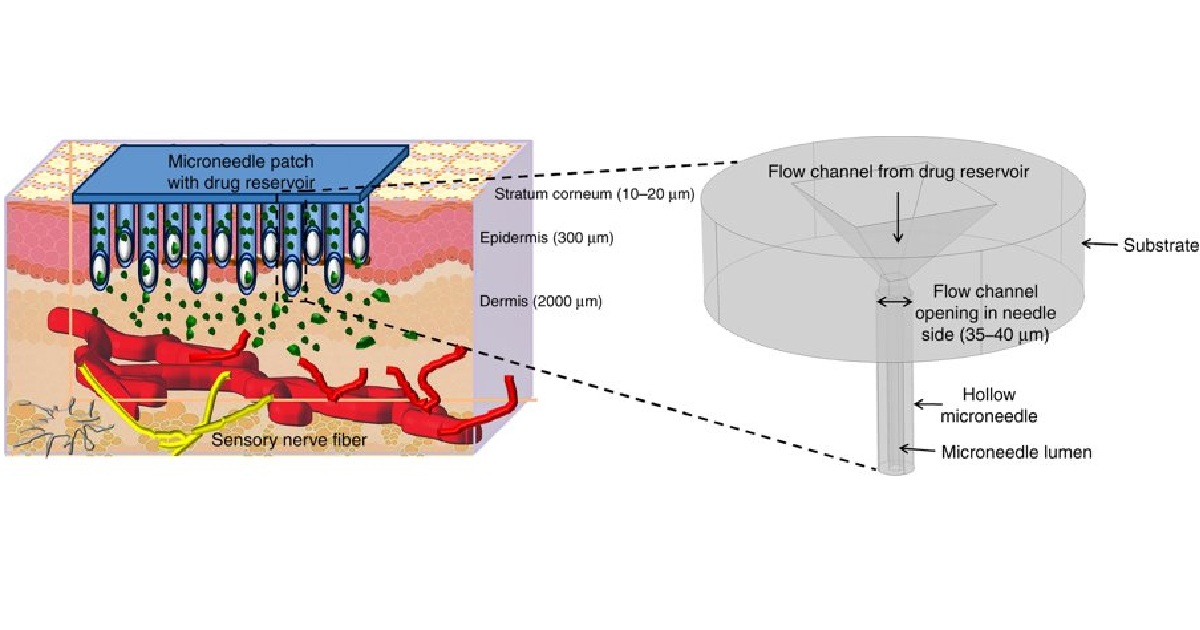Glassy carbon microneedles: A new transdermal drug delivery device
Phys.org | January 03, 2019

Microneedles are designed to infuse medications transdermally (through the skin) and relatively painlessly during clinical applications. In a recent study, Richa Mishra and her colleagues developed a new technique to convert polymer films into a fracture-resistant glassy form of carbon to develop microneedles. The optimized transdermal drug delivery device was fabricated using photolithography to form a biocompatible and robust microneedle for pre-clinical applications. The scientists first generated an array of vertical, hollow tubes made from the epoxy-based polymer SU-8 on a silicon substrate. The microstructures were sharpened into needle-like shapes by heat treatment in an oxygen-free oven and the final product was composed entirely of randomly ordered carbon atoms. Subsequent materials characterization included nanoindentation to measure the surface stiffness. The glassy carbon structures were robust enough to penetrate human skin without breaking. Results of the study were published on Microsystems & Nanoengineering.
The authors detailed the conventional carbon-microelectromechanical system (C-MEMS) process used to fabricate the microneedles. In the process, Mishra et al. used a scalable and irreversible step of pyrolysis, where the precursor of pre-patterned SU-8 microneedles was converted to glassy carbon structures. The experiments were conducted in an inert atmosphere at high temperatures (~900 0C) to retain their original shape after shrinking. On conversion to glassy carbon, the microneedles inherited the associated properties of hardness, biocompatibility, thermal and chemical resistance.